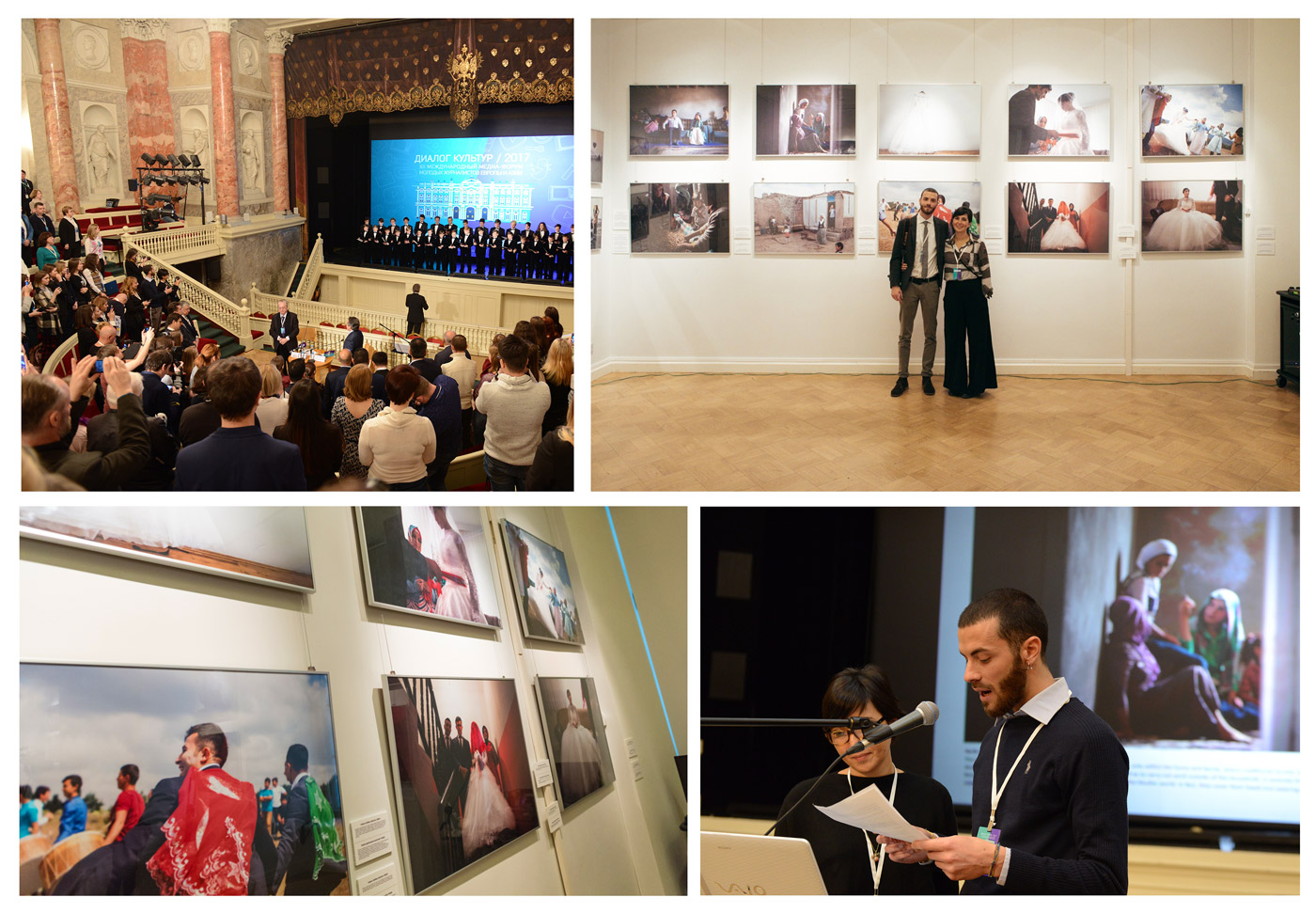Kurdistan, Turkey - 2014
Texts and photographs by Michele Cirillo and Emanuela Laurenti
Premise
Only scratched in the surface by the passing of time, by the Islamic conquest and other foreign dominations, the Kurdish culture is now in danger of being forgotten, or worse, losing its true identity, confused in recent years with the Muslim or Turkish tradition.
Put through to the Ottoman Empire and then divided by the Western powers in the four states of Turkey, Iraq, Iran and Syria, in the last ninety years, the Kurds have been victims of persecutions and slaughters that occurred with greater ferocity in Turkey, where a regime of forced repression resented every expression of their cultural identity.
 “Mountain Turks”. As Turks called Kurdish people.
“Mountain Turks”. As Turks called Kurdish people.
But in those mountains, dominated by the great Ararat, unquestionably still persist the flavors of ancient and specific traditions, traces of a thousand-years old past, vestiges of a precise and recognizable identity.
Among those mountains, the first days of the wedding of Sükran and Samet took place, a symbolic union, especially because of their origins and historical events: Sükran is Kurdish, Samet is Turkish.
Our journey starts here. In August 2014, at Xarik place as first, in Eastern Anatolia, and at Yozgat then, in Central Anatolia.
The Wedding
In the social structure Kurdish family is considered an inseparable unit: it is the core on which dipend the whole society and its importance is manifested on the occasion of a marriage.
Specifically, the Sükran and Samet wedding party lasted five days: the first part of the celebrations was held in the bride family home, in the altitudes of Xarik, with sober characters although colored. The remaining four days of celebrations, took place, with the most sumptuous atmospheres, in the groom's family house.
In Yozgat, a Turkish small town.
The criteria that direct the marriage of two young people often dipend on the relationship between their families. Even if there is not anymore the custom to give in marriage young girls, young men have some freedom of choice, young women even less, waiting for a sincere marriage proposal.
The history of Sükran and Samet fortunately is a different story.
Premessa
Scalfita solo superficialmente dal trascorrere del tempo, dalla conquista islamica e da altre dominazioni straniere, la cultura curda rischia oggi di esser dimenticata, o peggio ancora, di perdere la sua vera identità, confusa negli ultimi anni con la tradizione musulmana o turca.
Assoggettati dall’Impero Ottomano e poi suddivisi dalle potenze occidentali nei quattro Stati di Turchia, Iraq, Iran e Siria, negli ultimi novanta anni, i curdi sono stati vittime di persecuzioni e stermini avvenuti con maggior ferocia in Turchia, dove un regime di repressione forzata ha mal tollerato ogni espressione della loro identità culturale.
"Turchi di montagna". Fu definito così il popolo curdo dai turchi.
Ma tra quelle montagne, sovrastate dal grande Ararat, persistono indiscutibilmente i sapori di antiche e specifiche tradizioni, tracce di un passato millenario, vestigia di un’identità precisa e riconoscibile.
Tra quelle montagne, si sono svolti i primi giorni delle nozze di Şükran e Samet, un’unione soprattutto simbolica tra le loro origini e vicissitudini storiche: Şükran è curda, Samet turco.
Parte da qui il nostro viaggio. Nell’agosto del 2014, nei luoghi di Xarik dapprima, nell’Anatolia orientale, e di Yozgat poi, nell’Anatolia centrale.
Il matrimonio
Nella struttura sociale curda la famiglia è considerata un'unità inscindibile: è il nucleo fondamentale su cui è imperniata l'intera società e la cui importanza si manifesta proprio in occasione di un matrimonio.
Nello specifico, la festa nuziale di Şükran e Samet ha avuto una durata di cinque giorni: la prima parte dei festeggiamenti si è svolta nella casa paterna della sposa, tra le altitudini di Xarik, con toni decisamente sobri seppur coloriti. I restanti quattro giorni di celebrazioni, dalle atmosfere più sontuose, hanno avuto luogo, invece, nella casa della famiglia dello sposo. A Yozgat, cittadina turca.
I criteri che dirigono l'unione tra due giovani riguardano spesso i rapporti esistenti tra le rispettive famiglie. Benché non esista più l'usanza di destinare in spose le bambine, ai giovani rimane poca libertà di scelta, alle giovani donne ancor meno, nell'attesa più o meno sentita di un'offerta di matrimonio.
La storia di Şükran e Samet è una storia fortunatamente diversa.
2017 | Hermitage Museum - St.Petersburg - "The Kurdish Bride" - Group Exhibitions | 1st Place - Media Congress "Dialog of Culture" - Project "The Kurdish Bride"
 Back
Back
.jpg)
.jpg)
.jpg)
.jpg)
.jpg)
.jpg)
.jpg)
.jpg)
.jpg)
.jpg)
.jpg)
.jpg)
.jpg)
.jpg)
.jpg)
.jpg)
.jpg)
.jpg)
.jpg)
.jpg)
.jpg)
.jpg)
.jpg)
.jpg)
.jpg)
.jpg)